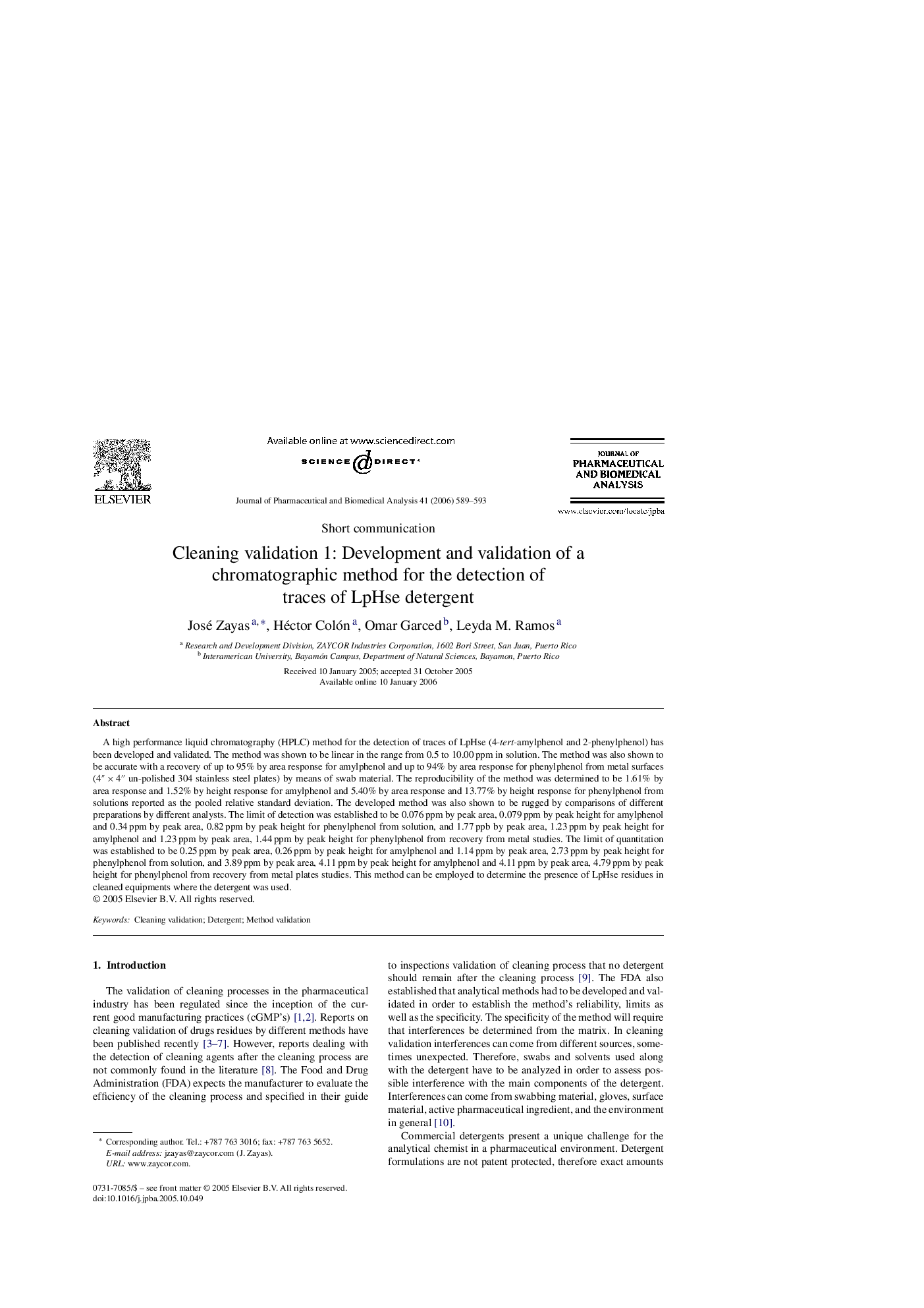| Article ID | Journal | Published Year | Pages | File Type |
|---|---|---|---|---|
| 1225026 | Journal of Pharmaceutical and Biomedical Analysis | 2006 | 5 Pages |
A high performance liquid chromatography (HPLC) method for the detection of traces of LpHse (4-tert-amylphenol and 2-phenylphenol) has been developed and validated. The method was shown to be linear in the range from 0.5 to 10.00 ppm in solution. The method was also shown to be accurate with a recovery of up to 95% by area response for amylphenol and up to 94% by area response for phenylphenol from metal surfaces (4″ × 4″ un-polished 304 stainless steel plates) by means of swab material. The reproducibility of the method was determined to be 1.61% by area response and 1.52% by height response for amylphenol and 5.40% by area response and 13.77% by height response for phenylphenol from solutions reported as the pooled relative standard deviation. The developed method was also shown to be rugged by comparisons of different preparations by different analysts. The limit of detection was established to be 0.076 ppm by peak area, 0.079 ppm by peak height for amylphenol and 0.34 ppm by peak area, 0.82 ppm by peak height for phenylphenol from solution, and 1.77 ppb by peak area, 1.23 ppm by peak height for amylphenol and 1.23 ppm by peak area, 1.44 ppm by peak height for phenylphenol from recovery from metal studies. The limit of quantitation was established to be 0.25 ppm by peak area, 0.26 ppm by peak height for amylphenol and 1.14 ppm by peak area, 2.73 ppm by peak height for phenylphenol from solution, and 3.89 ppm by peak area, 4.11 ppm by peak height for amylphenol and 4.11 ppm by peak area, 4.79 ppm by peak height for phenylphenol from recovery from metal plates studies. This method can be employed to determine the presence of LpHse residues in cleaned equipments where the detergent was used.
